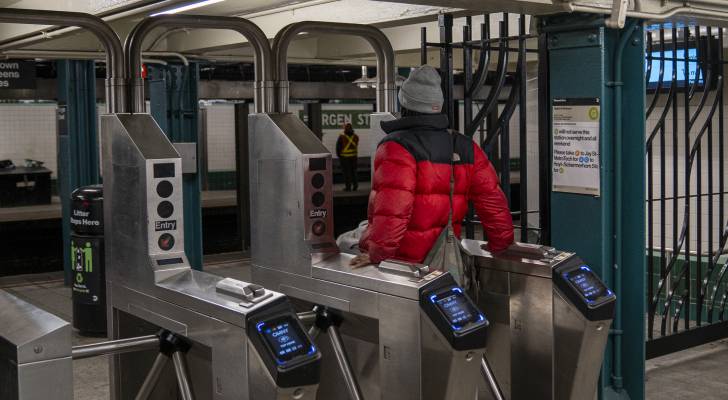More than half of Gen Z Canadians feel pressured to ‘fake’ financial stability: TD

Financial stress is shaping how young Canadians use social media, according to a new survey from TD Bank (1) — with more than half of Gen Z respondents saying they feel pressured to appear financially secure, even when they’re struggling behind the scenes. The survey, released October 14, found that 53% of Gen Z Canadians […]
Jim Cramer reveals 5 ‘boneheaded mistakes’ he’s made over decades of investing so you can skip the learning curve — and avoid costly errors

This article adheres to strict editorial standards. Some or all links may be monetized. Ask any celebrated investor the secrets to their success, and they’ll probably mention their setbacks too. Nobody is perfect. Everyone makes mistakes, and it’s learning from them that can separate the pros from the amateurs. Fortunately, that doesn’t mean you have […]
Young Americans are now pooling their funds to afford homeownership — why 1 woman says buying with her best friend was the best choice she ever made

Heidi Turner and her best friend have shared a lot over the years, including the dream of home ownership. They made it official 15 years ago, buying a home together — rather than waiting to save up for a down payment or marrying a life partner. Must Read Thanks to Jeff Bezos, you can now […]
North Carolina dad sent his son $10K to study abroad — but Ramsey Show hosts say not to give him another dime until he answers some pressing questions

As a parent, it’s natural to want to try to help your child pay for college. In a 2024 Northwestern Mutual survey, 95% of parents said they expect to pay for more than half of their kids’ college education costs, and 36% said they plan to cover the entire cost. (1) Must Read Thanks to […]
Fare evasions cost NYC $1 billion last year — and now the MTA is fighting back. But even if it works, here’s why riders still end up paying for it

An estimated six million New Yorkers rely on the Metropolitan Transportation Authority (MTA) every day — but too many of them are getting a free ride. Fare and toll evasion cost the MTA an estimated $1 billion in 2024 [1], whether it’s the subway, a bus, Long Island Rail Road or Metro-North service into Westchester […]
5 clear signs you’re punching way above the average American — are you richer than you think?

This article adheres to strict editorial standards. Some or all links may be monetized. Managing money is a lot like running. Many people dislike it, and most are just trying to reach the finish line without burning out. But a few are like elite athletes — effortlessly staying ahead of the pack. In fact, you […]
As tariff tensions rise, Bessent sees US aircraft engines, chemicals as leverage in trade talks with China. Is your portfolio armed or exposed?

The U.S.-China relationship has entered another high-stakes chapter as the Trump administration seeks to secure a more advantageous trade policy with the country. In a Sept. 24 Fox Business interview, Treasury Secretary Scott Bessent said the U.S. can leverage its strength in aircraft engines and parts and certain chemicals in trade discussions with China. (1) […]
This 1 industry has been thrown into ‘chaos’ with the price of gold rising over 50% this year — here’s how you can invest for shiny profits as well

Considered a safe haven in turbulent times, gold has crossed a significant milestone, coming in at $4,000 per ounce for the first time in early October. Must Read Thanks to Jeff Bezos, you can now become a landlord for as little as $100 — and no, you don’t have to deal with tenants or fix […]
Japanese senior built $440K nest egg by skipping A/C, not eating out for decades — but now regrets it at 67. Are you missing the ‘meaning of life’?
This article adheres to strict editorial standards. Some or all links may be monetized. Building a retirement nest egg worth nearly half a million dollars is something many people hope to achieve. A 67-year-old man in Japan has done just that — but his story is going viral — not because of his financial success […]
I’m 45 with a $200K windfall that I plan to invest. My goal is to retire at 67 with $100K in passive income — should I focus on dividends or growth?

Imagine getting a $200,000 windfall — maybe through an inheritance, lotto winnings or even a lawsuit ruled in your favor. Must Read Thanks to Jeff Bezos, you can now become a landlord for as little as $100 — and no, you don’t have to deal with tenants or fix freezers. Here’s how Dave Ramsey warns […]